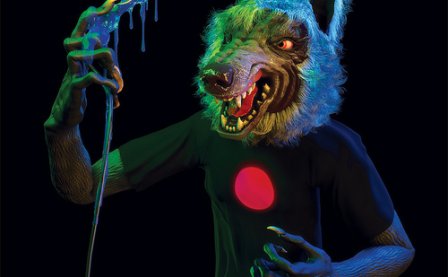There is good reason to be skeptical of the possibility of divorcing musical works from the film they soundtrack or the installation they inhabit. Split from the visual, the audio loses context and is thereby in danger of losing its initial sense. In some cases, this loss of sense is an accident of the repackaging, a sacrifice made to more exhaustively capitalize on the work of creation, in hopes that the listeners, whether followers of the musician or audiences of the original, will suspend the need for this original meaning in favor of an audio fragment. Perhaps in some cases, such as major Hollywood soundtracks, the repackaging represents a kind of trust in the audience’s memory and the strength of each piece to evoke those scenes they once accompanied. Or maybe it reflects a hope that they will find use as mood music for new “scenes” that the listeners themselves will create — for instance, gamers soundtracking their sessions with the OST of The Lord of the Rings trilogy or Braveheart, or haunted house creators filling their space with horror soundtracks.
But another possibility exists: the musical work, shorn from its original context, becomes a new work altogether. Robert Beatty’s Soundtracks for Takeshi Murata, though having arisen as a result of the collaboration with artist Murata, escapes the pitfalls of mere repackaging by its avoidance of narrative and its otherworldliness, its original context now held as an inspiration for a new work.
It goes without saying that you don’t have to be familiar with Murata’s work to appreciate Beatty’s sound design, but some description helps to illuminate why Soundtracks is successful here. Murata’s work is various, but with the exception of “Cone Eater,” the pieces collected here primarily soundtracked Murata’s digitally-glitched video pieces. Murata pioneered the now viral technique known colloquially as “datamoshing,” in which he purposefully over-compresses video so that it tracks only movement. It transforms typical scenes from films such as Pink Dot and Rambo into landscapes of multiplying frame-superimpositions, out of which only the most dynamic movements and dramatic cuts rise through the morass of data. The technique has found its way into everything from animated GIFs to Kanye West videos, but these appropriations are significantly less considered than Murata’s works, which employ hand-selected frames from specific films in order to craft a work more meaningful, if not significantly more narrative. Pink Dot, soundtracked by Beatty’s “Untitled (Pink Dot),” is a slightly more narrative exception, as Rambo, constantly battling through the film to escape the glitchscape, finally does succeed in emerging from the grey wash of data and destroying the omnipresent pink dot at the center of the frame; a “plot” event finally does occur.
The usual lack of narrative and the noumenal images that compose Murata’s films require a very different sort of soundtrack than, say, the soundtrack to the original Rambo, one that evokes mood and texture as opposed to plot or character. It’s less crucial that the sonic environment links to the visual as an evocative narration of the specific events depicted; instead, Beatty matches Murata’s visuals through a kind of textural symphony. Where Murata’s film Silver seethes with layered glitch patterns and absorbs recognizable images into its folds of data, Beatty’s soundtrack washes in heavily modulated, liquid synth lines, while melodies and samples echo into a delayed oblivion. The linkage here is one of inspiration, not interpretation. Although the original work obviously includes both audio and visual, Beatty’s collected soundtracks achieve an aura of their own because they are not semantically tied to the films.
In listening to Soundtracks, a nagging curiosity about the film that inspired each piece hangs about the music due to the historical linkage implied by the title. That curiosity seems external, however, to the works themselves. Having watched Murata’s Pink Dot in its entirety, Beatty’s soundtrack seems only to evoke the consistent but amorphous central pink dot, not the emergent Rambo scenes. In this way, “Untitled (Pink Dot)” makes almost more sense in the context of the album. Its subtle, evolving repetitions over its 20-minute length are much easier to investigate without splitting attention with the visual. However, its separation from the visual also increases the demands the listener places on the piece, requiring more novelty to capture the listener’s interest. “Untitled (Pink Dot)” does occasionally drag because of this, but when it was a soundtrack, that problem was not apparent. Were Beatty to have given the track more movement, it may have distracted from the video.
Beatty’s Soundtracks works well as an album, using the conceptual inspiration of the video works to unify the collection. As soundtracks to Murata’s video work, they are the perfect accompaniment, but as a new work, its soundscapes rarely rise above the level of interesting textures. This raises some crucial questions: What structural requirements do we make of experimental video, and how do they differ from those we require of music? To what extent should the time-functions of a soundtrack sync to its video, especially when it eschews narrative and plot? These are perhaps more suited to different works. Ultimately, it’s these slippery questions that allow Beatty’s works to have an independent existence that seems more real than a typical repackaging of orphaned pieces, lost from their original context. These pieces, in their strangeness and textural depth, invite deeper listening in their new context, the listener now liberated from the fascination with the visual.
More about: Robert Beatty




